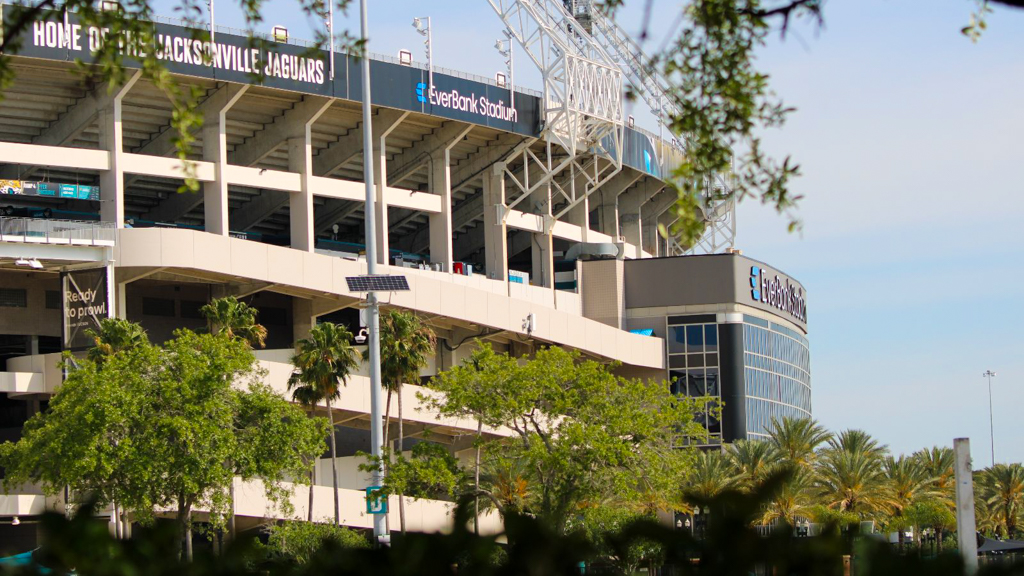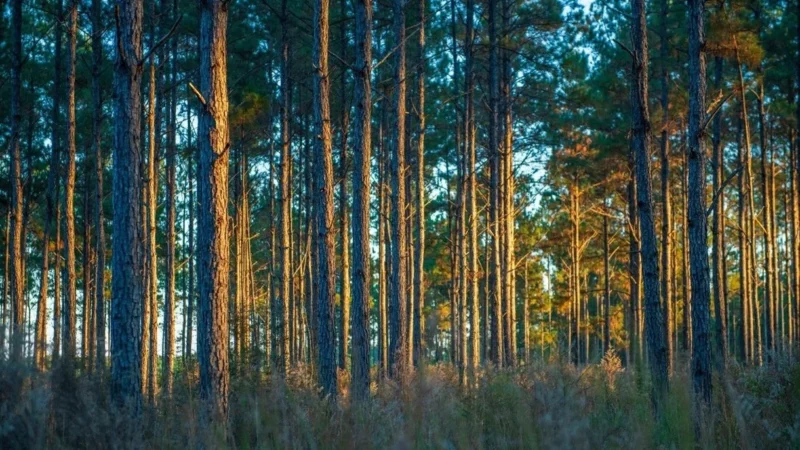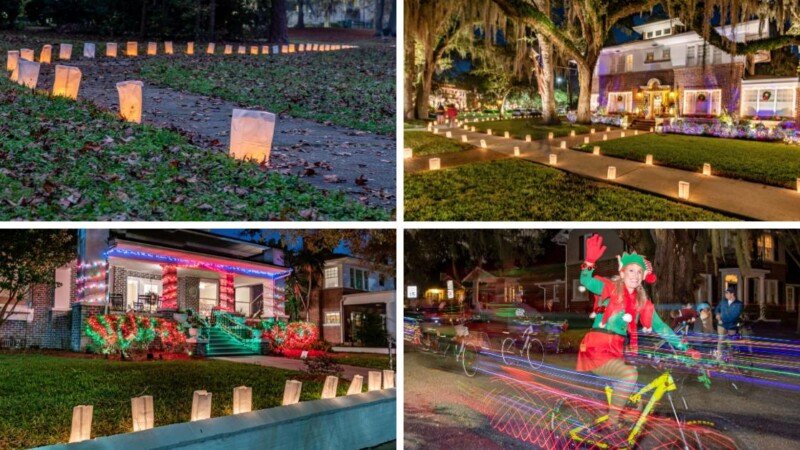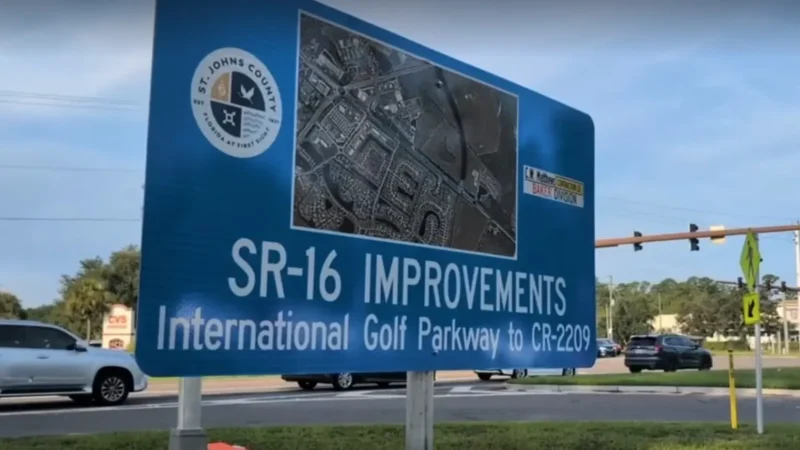Alice Kimbrough has served cold treats in Jacksonville’s Historic Eastside from her Honey Dripper House ice cream truck for more than a decade.
The Eastside native and educator says it took volunteer groups and organizers in the community north of Downtown and EverBank Stadium years of work and community meetings to reach this point — a historic $115 million investment from the Jacksonville Jaguars and the city, part of a Community Benefits Agreement included in the $1.4 billion stadium renovations deal.
Local officials will soon decide who will oversee the money and how it will be spent.
“Sometimes, things didn’t work out the way we want it to. Now, we’re glad there are people — the city, the Jaguars — are seeing now all the hard work we’ve done over the years,” Kimbrough told Jacksonville Today.
“The things with housing and things the community needs. Those are the things we’ve been working on. … We are happy that the Jaguars and the city of Jacksonville have come together to make this a reality.”
A Jacksonville City Council committee is in charge of creating the board structure for an independent nonprofit that will manage the the city’s $40 million pledge for Eastside investment in the stadium agreement. The commmittee met Monday and adjourned with a tentative plan for a nine-member board.
If approved by the full council, the makeup of the Community Benefits Agreement board would look like this:
- Two appointed by City Council.
- One appointed by the mayor.
- One representative for the Jaguars.
- Five Eastside stakeholders.
The six-member committee includes Chair Raul Arias, Vice Chair Jimmy Peluso and council members Ken Amaro, Nick Howland, Tyrona Clark-Murray and Will Lahnen.
Arias and Peluso say they attended several meetings earlier this year with community members who landed on a structure modeled after the Cultural Council of Greater Jacksonville.
That nonprofit has six board members appointed by the mayor and another nine chosen by the board itself, which is meant to allow the group to bring in niche expertise and have some autonomy from elected officials.
“The Cultural Council model allows for the most flexibility and still a large amount of accountability. … We want to make sure whatever is created has sustainability and long-term success, and I think that makes the most sense, and it’s what the community is telling us,” Peluso, who represents the Eastside, said.
Travis Williams — who heads the Together Eastside Coalition and is interim CEO of the nonprofit business, nonprofit and philanthropic aid organization LiftJax Inc. — told the council committee Monday that stakeholders want the Community Benefits Agreement board to operate within city government’s accountability structures but have the autonomy to develop and fund programs with people who understand the needs of the Eastside.
The board will be responsible for drafting an annual budget approved by the Mayor’s Budget Review Committee and council as part of the annual city budget process, as well as award grants to fund project and programs.
The committee is expected to finalize the board’s structure at a meeting May 21 and consider advancing legislation to the full City Council to codify the plan.
Williams says the Together Eastside Coalition’s pro-bono attorney, Nelson Mullins Riley & Scarborough, has drafted proposed legislation to form the board that will be shared with the city Office of General Counsel to edit and for the committee to introduce to the full council.
According to Williams, Nelson Mullins has agreed to continue to provide legal services and will also help Eastside organizers file for 501(c)(3) status with the state.
Committee members still need to decide if the five board seats designated for Eastside stakeholders will be reserved for current residents or if they could include former residents and business owners who have legacy or interests in the area.
Amaro proposed the Eastside seats to ensure the area’s five district neighborhoods have equal representation in the nonprofit’s decisions.
City leaders want the $40 million for the Eastside to target three areas — reducing homelessness, housing revitalization, and workforce and economic development.
Williams told the committee the Eastside has expertise in all the city’s targeted investment categories that will be an asset for the nonprofit and a pool of potential board members.
“There are people who live in the Eastside who are experts on those things. The boundary of where folks live or their business is important, but I think what is equally important is that we recognize that the ingenuity and genius of the residents or the people who are stakeholders who have that expertise that every governing body needs,” Williams said. “As you look at the parameters of the members, I ask that you broaden that.”
More for infrastructure
As the value of Eastside properties hopefully rise as investment from the Jaguars and city ramps up, council members and Eastside organizers want to ensure that any new property tax revenue generated goes right back into the community in the form or roads, sidewalks and other infrastructure needs.
The Jaguars will invest their portion over a 30-year period while the city’s $40 million commitment will be $4 million annually. The future nonprofit would also be allowed to cover staffing and administrative costs from the $4 million.
The committee is considering something similar to a Tax Increment Financing district, which allows projects to be funded with the growth in property tax revenue of a designated area.
Peluso has proposed that 80% of that new revenue go toward Eastside infrastructure over 30 years, but the committee has not finalized the proposal.
“Just keep in mind, the amount of improvements that are being made in the community with these dollars is definitely going to increase the property value in the area, and that’s the whole point of these TIFs. So if we did nothing, the property values in the area wouldn’t be nearly as robust as they would be had these dollars gone into it,” Peluso said.
“So this really is a net gain for the city in terms of the revenues that we’re bringing in. It’s just we’re playing a long game.”
Jacksonville Today reporter Will Brown contributed to this report.







